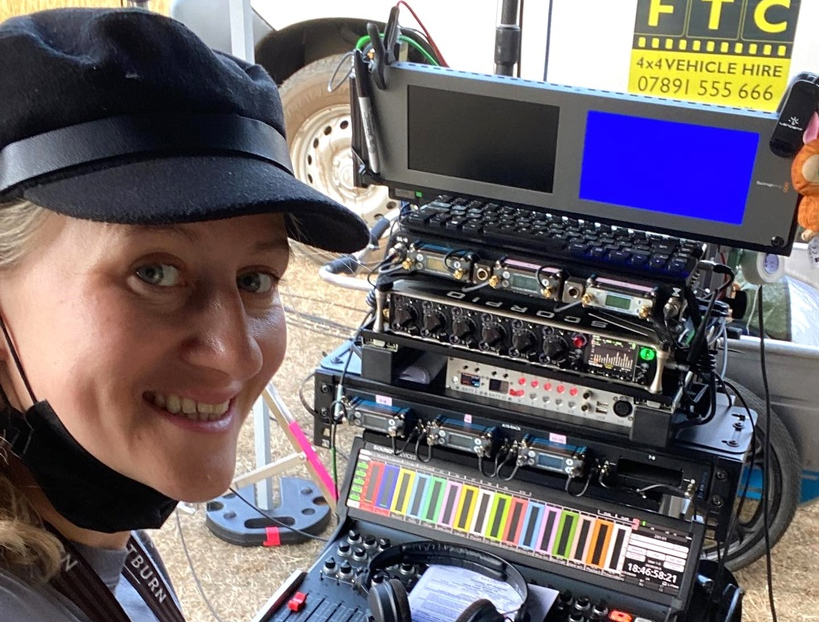Production sound mixer Nina Rice, with credits that include the summer blockbuster Barbie along with Persuasion, This Is Going To Hurt, and Saltburn (directed by Greta Gerwig, Carrie Cracknell, Lucy Forbes, and Oscar-winner Emerald Fennell, respectively) in addition to several episodes of the historical drama The Crown, regularly employs Lectrosonics Digital Hybrid Wireless gear as a key component of her workflow.
Specifically, her Digital Hybrid Wireless stable includes a bevy of SSM micro-compact transmitters, legacy SMB transmitters, HMa plug-on transmitters for boom and plant mics, and SRc receivers alongside their predecessor, the SRb.
“I started at the bottom, so to speak,” Rice says about her early career. “I went to the National Film and Television School at Beaconsfield back in 2010. I was in TV drama for a bit, but I also worked on my own documentaries, including one in Chicago called Dream Catchers. Then, I assisted in sound on The Crown, then worked my way up to boom operator, then mixing second unit.”
Her experience with Lectrosonics started on a documentary series shot in Japan called Becoming You. “It’s about the first 2,000 days of childhood from birth and it included a lot of small children,” says Rice. “That’s why I love the SSM — they’re tiny and easy to hide.”
Sometimes adult wardrobes also provide sparse real estate for hiding transmitters, such as in films with focal beach scenes. “We work very closely with costumers to come up with solutions for hiding transmitters on artists,” she notes. “The size of the SSM gives us that flexibility — we recently even sewed a mic and SSM pack into a massive wig for a prominent lead actress.”
In films with large casts, the sheer numbers necessitate careful frequency coordination. “I;ve had up to 18 channels of wireless going at times,” says Rice. “With the width of spectrum now being taken up by things like 5G service, you need to have your wits about you and test everything. For that reason, I love the flexibility of Lectrosonics and especially the third-party LectroRM app, which lets me remotely control transmitter packs so, again, I don’t have to engage artists on set.”
Moviegoers may not actively notice the natural quality of both spoken dialogue and sung passages in Rice’s work, which of course means her equipment is doing its job perfectly. “I’ve done tests before, recording things from whispers to shouts, using the same actor and microphone,” she says. “Not only do I find the audio quality excellent, but it’s my team who have to be most hands-on — they’re the ones placing packs on the actors — and they’re constantly singing their praises. I was struck by the consistency of the audio whether using a current-model pack or a legacy one; it was fantastic across the board.”
Read the full interview with Nina Rice on the Lectrosonics website.




















